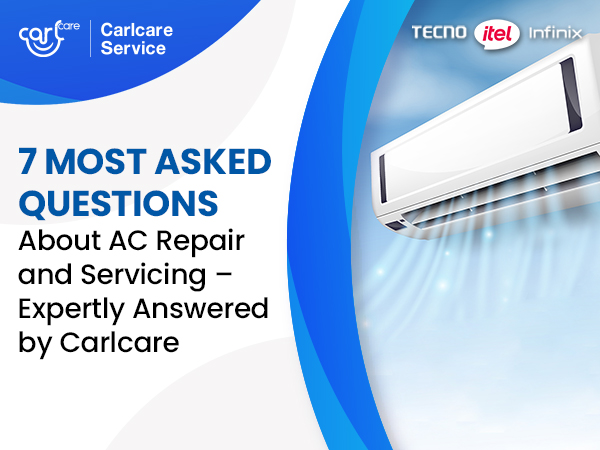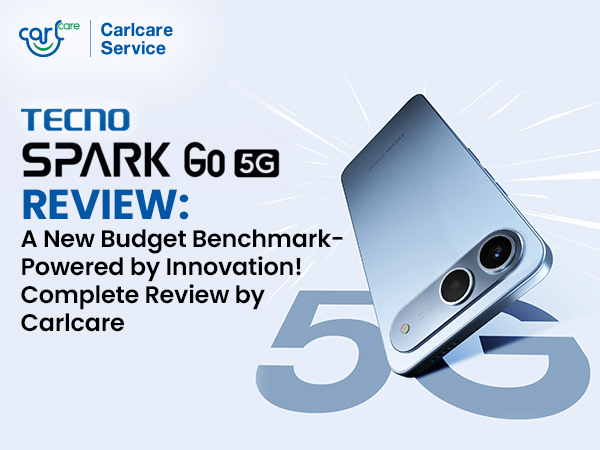
In recent years, we have witnessed a remarkable shift in smartphone technology - the rise of water-resistant phones. Manufacturers have recognized the need for durable devices that can withstand accidental water exposure. Top mobile manufacturers including TECNO and Infinix have already launched water resistant phone in the market, The Tecno Spark 9T is waterproof with a rating of IPX2, while from Infinix its latest launch Infinix Note 30 5G 256GB come with water-resistant properties
In this article, we will explore the benefits of water-resistant phones, how they work, and what steps you can take to deal with water damage if it does occur.
The Advantages of Water-Resistant Phones: Water-resistant phones offer several advantages over their non-resistant counterparts. They provide peace of mind, allowing users to use their devices near water sources without constant worry. Whether it's capturing photos at the beach or answering a call in the rain, water-resistant phones offer increased durability and protection.
Understanding Water Resistance Ratings: To understand the level of water resistance of a phone, it's important to know the IP (Ingress Protection) rating. The IP rating consists of two numbers, with the first indicating protection against solid objects and the second representing water resistance. Familiarize yourself with the different IP ratings to ensure you make an informed purchase decision.
Precautions and Maintenance: While water-resistant phones are designed to withstand water exposure, it's essential to take certain precautions. Avoid submerging your phone in water for extended periods or exposing it to high-pressure water sources, such as a showerhead. Additionally, regularly inspect the phone's ports and seals for any signs of damage or wear.
Immediate Steps After Water Exposure: Let’s accept it. Not all phones, maybe including yours, are not water resistant. If your phone does come into contact with water, act swiftly to minimize potential damage. else, you may not be able to use your dear phone again.
First Let’s discuss the Do’s and Don't if your phone gets wet/ falls in the water
As mentioned above, when your phone gets wet or falls into the water, it's crucial to take immediate action to minimize potential damage. Here are some dos and don'ts to follow in such situations:
Check these Dos:
- Retrieve the phone from the water quickly: Remove the phone from the water as soon as possible to prevent further exposure.
- Power off the phone: Turn off the device immediately to prevent short circuits and potential damage to internal components.
- Dry the exterior: Gently wipe the phone's exterior with a soft cloth or towel to remove any visible water.
- Remove removable components: Take out the SIM card, memory card, and any other removable parts, as they can trap moisture and potentially damage the device.
- Air dry the phone: Place the phone in a dry, well-ventilated area. You can use a fan or simply let it air dry naturally. Make sure to leave it undisturbed for at least 24-48 hours to ensure all moisture evaporates.
- Use desiccants: To expedite the drying process, you can place the phone in a bag with silica gel packets, uncooked rice, or other moisture-absorbing materials. These desiccants can help absorb the moisture from the device.
- Seek Professional Assistance: If you are unable to resolve water damage on your own or if your phone shows signs of malfunction, seek professional assistance from a qualified mobile repair service provider. The best help, undoubtedly, comes from your authorized service center. For TECNO, itel and Infinix phones, don’t look beyond Carlcare Service. Our technicians at authorized Carlcare service centers have the expertise and specialized tools to assess the extent of the damage and carry out the best repair for water-damaged phones.
Now some Don'ts:
- Do not turn on the phone: Avoid powering on the phone immediately after it gets wet. This can cause short circuits and further damage the internal components.
- Do not shake or blow into the phone: While it may be tempting, shaking or blowing into the phone can force water further inside, potentially causing more harm.
- Do not use heat sources: Avoid using hair dryers, ovens, microwaves, or any other direct heat sources to dry the phone. Excessive heat can damage the internal circuitry.
- Do not press buttons excessively: Pressing buttons or trying to operate the phone while it's wet can push water into sensitive areas and worsen the damage.
- Do not freeze the phone: Freezing the phone is not an effective method to dry it out. It can lead to condensation inside the device when it thaws, causing additional damage.
- Remember, even with prompt action, water damage may still occur. It's always a good idea to back up your data regularly to ensure you don't lose important information.
- If you're unsure about how to handle the situation or if the damage is severe, it's best to consult a professional mobile repair service for assistance. They have the expertise and specialized equipment to properly assess and repair water-damaged devices.
Which Parts are most damaged if your phone falls in water?
When a phone falls in the water, certain components are more susceptible to damage due to their sensitivity to moisture. The parts that are commonly affected by water damage include:
- Logic Board/Circuit Board: The logic board, also known as the circuit board or motherboard, is the central component that houses the phone's major electronic circuits and chips. It controls the phone's functions and connectivity. Water exposure can cause corrosion and short circuits on the logic board, leading to malfunctions or complete failure.
- Battery: The battery, usually a lithium-ion or lithium-polymer type, can be damaged if exposed to water. Water can disrupt the battery's chemical reactions, resulting in reduced performance or complete failure. In some cases, water damage may also pose safety risks to the battery.
- Display: The phone's display, including the LCD or OLED screen, is vulnerable to water damage. Water can seep into the display assembly, leading to discoloration, dead pixels, or complete screen failure. In some cases, water damage may cause fogging or condensation inside the display.
- Charging Port: The charging port is another common area prone to water damage. Water can cause oxidation or corrosion on the charging port's connectors, making it difficult or impossible to charge the phone. It may also affect the data transfer functionality.
- Speaker and Microphone: The phone's speaker and microphone are exposed openings that can allow water to enter easily. Water damage to these components can result in muffled sound, distortion, or complete failure of audio functionalities.
- Camera Module: The phone's camera module, including the rear camera and front-facing selfie camera, can be impacted by water damage. Water intrusion may result in blurred images, distorted colors, or complete camera malfunction.
- Internal Connectors: Various internal connectors within the phone can corrode or develop electrical issues due to water exposure. This can affect the proper functioning of different components and lead to overall performance problems.
Remember, if your itel, TECNO, or Infinix phone experiences water damage, it is advisable to act quickly and avoid attempting DIY repairs. Water damage can be complex and require specialized knowledge and equipment to resolve effectively. Carlcare Service is an authorized service center that specializes in repairing itel, TECNO, and Infinix phones. Choosing Carlcare Service ensures that your device is repaired by professionals who are well-versed in the specific requirements of these brands, increasing the chances of a successful repair and optimal device performance.
You can make an online reservation for your water-damaged phone repair with Carlcare Service, and enjoy priority service.

















